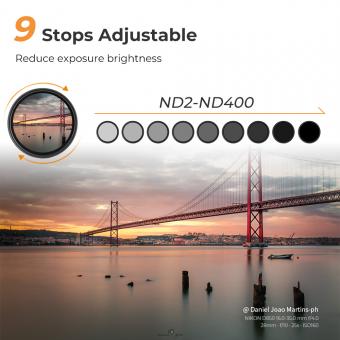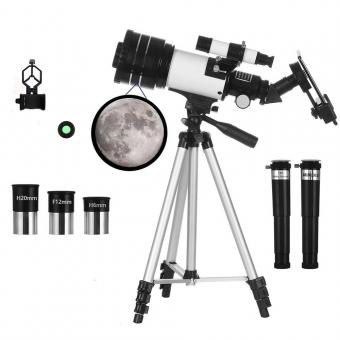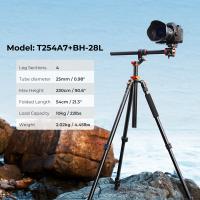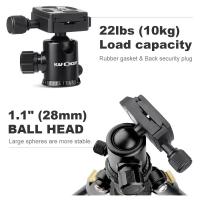Reviews
Excellent Quality Glass Filter Allowing More Control Over Exposure in Brightly Lit Scenes
At about 4mm thick, with its measurements of 4” x 5.65”, the K&F Concept 0.9 ND Cinema Filter is a pretty hefty chunk of glass, and with all those coatings, on both sides, a beautiful thing to behold. A 0.9 ND filter is used to reduce transmitted light by 3-stops, allowing the user more options and better control of exposure in brightly lit environments.
I have a number of K&F Concept filters, most of my lenses live their lives with a K&F protective filter on their front element, and I own some of their other photo/video accessories as well; I consider them a trusted manufacturer.
As the seller asserts, their Cinema Filter is sized specifically for Tilta and Smallrig mini matt boxes, although there may be other manufacturer’s matt boxes that they fit. A matt box fits onto the front of a lens, basically serving two purposes, as a filter holder and a lens shade. In the case of the Tilta matt box, there are grooves on the leading edge into which the filter slides and is held snuggly in place.
Handling the filter takes some care, since it is not enclosed in anything, for example a frame, but is glass from edge to edge. In our case, we keep cotton gloves around for such situations, and use them when handling the filter. Oddly, K&F Concept has always provided a cleaning cloth with every other filter I’ve acquired from them, but not in this case; it would be nice if they did, but I’m not complaining.
The filter arrives in retail packaging, with a magnetic closure, that is a storage case unto itself, however the actual filter case, that gives the impression of faux leather, is exceptional. It has a flip open flap (a flipping-flap) with a bright orange nylon strap attached that when pulled, slides the filter up and out, making it convenient to grasp from the edges. The inner lining of the filter case appears to be soft cotton, although I am not certain of that.
I ran a couple of tests on the filter, one to check its exposure accuracy and another to check whether it diminishes the sharpness of the transmitted image. For those tests, the results of which I have provided, I photographed the lettering on the back of a box of cake mix, under artificial light. In the case of the exposure test, I simply calculated the exposure with the ND filter applied, and made the exposure. I then removed the filter, closed down three stops, since I am testing an ND 0.9 filter, and made another exposure. I found the seller’s stated filter factor of 0.9 to be accurate; both exposures were recorded with the histogram in the same range.
For the sharpness test, I used the same two images, with and without the filter, and enlarged them 500%. In this case, I found that the filter did have the effect of diminishing the sharpness. I provided the pictures and labelled them. This may not be an issue if you aren’t enlarging your videos significantly.
The physical quality of the K&F Concept ND Cinema Filter, and its coatings, along with the provided case, appear outstanding. The filter factor of 0.9 is accurate as far as my testing determined, but I am disappointed in the reduction of sharpness. That said, that may not be an issue in practice, since, in my opinion, modern digital video capture is overly sharp and unemotional anyway. I’ll know more when I’ve had a chance to use the lens in a live shooting situation.
I have a number of K&F Concept filters, most of my lenses live their lives with a K&F protective filter on their front element, and I own some of their other photo/video accessories as well; I consider them a trusted manufacturer.
As the seller asserts, their Cinema Filter is sized specifically for Tilta and Smallrig mini matt boxes, although there may be other manufacturer’s matt boxes that they fit. A matt box fits onto the front of a lens, basically serving two purposes, as a filter holder and a lens shade. In the case of the Tilta matt box, there are grooves on the leading edge into which the filter slides and is held snuggly in place.
Handling the filter takes some care, since it is not enclosed in anything, for example a frame, but is glass from edge to edge. In our case, we keep cotton gloves around for such situations, and use them when handling the filter. Oddly, K&F Concept has always provided a cleaning cloth with every other filter I’ve acquired from them, but not in this case; it would be nice if they did, but I’m not complaining.
The filter arrives in retail packaging, with a magnetic closure, that is a storage case unto itself, however the actual filter case, that gives the impression of faux leather, is exceptional. It has a flip open flap (a flipping-flap) with a bright orange nylon strap attached that when pulled, slides the filter up and out, making it convenient to grasp from the edges. The inner lining of the filter case appears to be soft cotton, although I am not certain of that.
I ran a couple of tests on the filter, one to check its exposure accuracy and another to check whether it diminishes the sharpness of the transmitted image. For those tests, the results of which I have provided, I photographed the lettering on the back of a box of cake mix, under artificial light. In the case of the exposure test, I simply calculated the exposure with the ND filter applied, and made the exposure. I then removed the filter, closed down three stops, since I am testing an ND 0.9 filter, and made another exposure. I found the seller’s stated filter factor of 0.9 to be accurate; both exposures were recorded with the histogram in the same range.
For the sharpness test, I used the same two images, with and without the filter, and enlarged them 500%. In this case, I found that the filter did have the effect of diminishing the sharpness. I provided the pictures and labelled them. This may not be an issue if you aren’t enlarging your videos significantly.
The physical quality of the K&F Concept ND Cinema Filter, and its coatings, along with the provided case, appear outstanding. The filter factor of 0.9 is accurate as far as my testing determined, but I am disappointed in the reduction of sharpness. That said, that may not be an issue in practice, since, in my opinion, modern digital video capture is overly sharp and unemotional anyway. I’ll know more when I’ve had a chance to use the lens in a live shooting situation.
07/10/2024
Related Articles
Top Bestselling Products
Guess you like products
£26.24 £20.99
Guess you like articles
Related searches
Digital Camera With Manual Exposure Control
Long Exposure Lens Filter
Nd Filter For Night Long Exposure
Glass Solar Filter For Camera
Glass Filter Uv Light
Uv Pass Filter Glass
Lens Cap Over Filter
Double Exposure In Digital Camera
Exposure Optics Monocular Telescope
Multiple Exposure Digital Camera













































